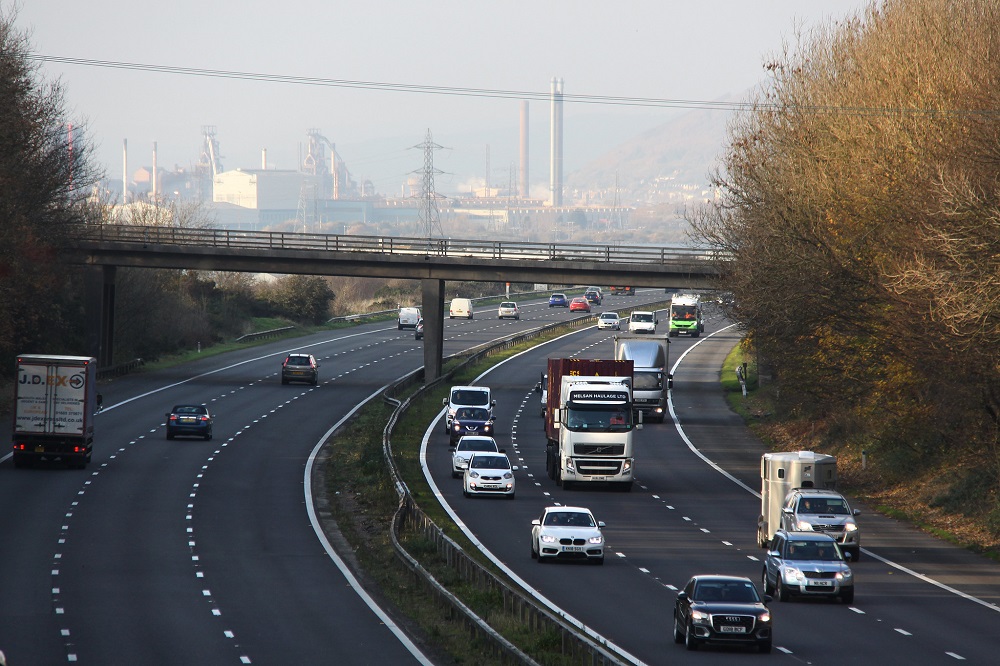High levels of pollution recorded on residential stretch of the M4

Lewis Smith, local democracy reporter
Levels of air pollution were said to have exceeded targets in one residential stretch of the M4 for a total of 46 days in 2023.
The figures were revealed as part of draft proposals for a new air quality action plan Neath Port Talbot, which have gone out to public consultation following approval at a recent council meeting.
The plans have been designed by the local authority in order to to improve air quality in the Neath Port Talbot area between 2024 and 2029, as well as ensuring that the daily targets for pollutants are met.
Engage
They follow a previous version of the plan that was introduced in 2012, with members first needing to “consult and engage widely with the public and stakeholders” before any changes could be made to it.
A draft version of the report read: “This report outlines the actions that Neath Port Talbot County Borough Council will deliver between 2024-2029 in order to reduce concentrations of air pollutants and exposure to air pollution; thereby positively impacting on the health and quality of life of residents and visitors to Neath Port Talbot.”
However, details within the document showed that while large portions of land running alongside the M4 corridor were in line with air quality targets, some were still above the allowed limit in 2023.
These were based in an Air Quality Management Area that was previously declared for Margam-Taibach, and covers the majority of the residential area between the Tata steelworks site and the M4 motorway.
Trending
Figures showed that while the area was trending overall towards lower pollution levels with no breaches reported between 2018 and 2022, the area of Prince Street did exceed daily mean PM10 concentrations on a total of 46 days in 2023, which is 11 days more than is allowed by the air quality objective.
Historically, Port Talbot has been subject to high levels of airborne particle pollution, known as PM10 (particles less than 10 microns in diameter), which has been linked to the industrial nature of the area.
As a result the plan says the location will now be kept under review by the council and Welsh Government, along with a range of other mitigations such as planning and environmental strategies, as well as the Decarbonisation and Renewable Energy Strategy that is designed to reduce energy consumption.
Electric vehicle charging infrastructure
Other actions in the plan include the controversial replacement of Tata steel’s blast furnaces with an electric arc furnace, a move expected to reduce PM10 emissions by 176 tonnes – as well as the development of electric vehicle charging infrastructure, traffic management, the deployment of electric buses, and the promotion of low emission transport. There will also be steps to reduce the amount of nuisance dust and other pollutants found there.
The air quality action plan will be subject to an annual review and appraisal
of progress once completed, with the final version expected to be brought back before the council for approval towards the end of 2024 along with the feedback from the consultation.
Support our Nation today
For the price of a cup of coffee a month you can help us create an independent, not-for-profit, national news service for the people of Wales, by the people of Wales.





So obviously the drop in the speed limit to 50 mph on the motorway to improve air quality is working as planned then. NOT!